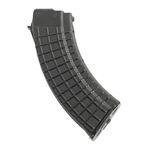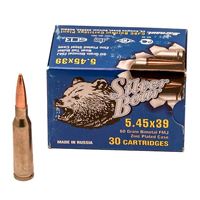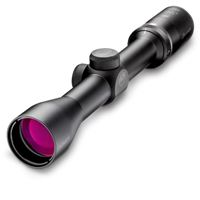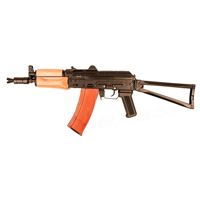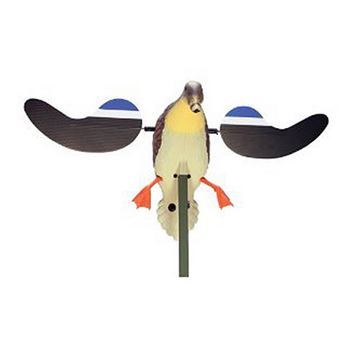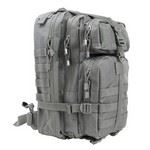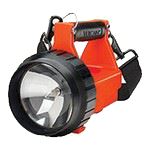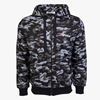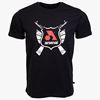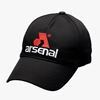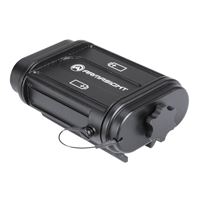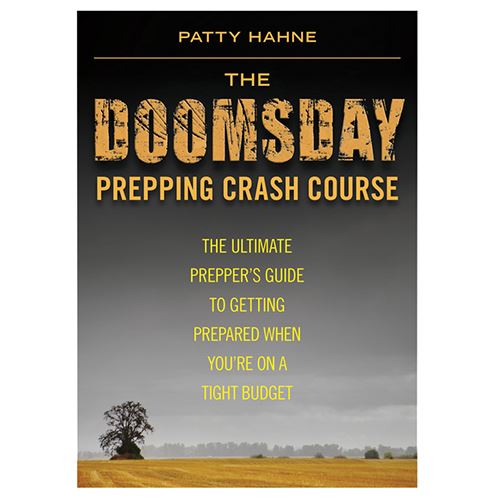- Sign In |
- Sign Up
- Wishlist 0
-
Shopping cart
0
You have no items in your shopping cart.
California Restrictions
California
DISCLAIMER: K-Var will not modify a firearm from its manufactured packaging in order to make it compliant for state laws. K-Var will not ship firearms to a third party to be modified or changed in any way from manufactured specifications. All purchased firearms must be compliant “as is” from the manufacturer before the item(s) will ship. Information regarding State and local restrictions, laws and ordinances presented on this page are generalized summations of the above named State’s law, provided for customer convince. Laws and ordinances for firearms, ammunition, and certain other items are however, subject to change, without notice. It is the responsibility of the customer to know his or her own State and local restrictions.
|
State Regulations |
||||
|
Subject Matter |
Rifle / Shotgun |
Handgun |
Relevant Statute |
General Description |
|
State Permit Required to Purchase |
Yes |
Yes |
§26500 GC |
All firearm sales must be completed through a dealer. Firearm purchases require a Firearm Safety Certificate and proof of residency unless the individual purchasing the firearm is active duty military or a peace officer under Penal Code Section 830. Military reservists must provide proof of residency in order to purchase a firearm. |
|
State Firearm Registration |
Yes |
Yes |
§28150 GC |
The California Department of Justice (""DOJ"") retains information about the purchaser and seller of all in-state firearm sales and transfers, and requires that any firearms imported into the state be reported to the DOJ. Furthermore, the Attorney General is required by law to maintain a registry containing the fingerprints and identifying information of the transferee, and the unique identifying information of every firearm transferred in the state, pursuant to §11106. All handgun serial numbers and sales are recorded by the state in the Department of Justice's Automated Firearms System, along with those of many long guns. While there is no requirement for California residents to register handguns owned prior to 1991 with law enforcement, §12025 and §12031 enhance several misdemeanor offenses to felonies if the handgun is not on file in the Department of Justice's Automated Firearms System. New residents must register handguns (purchased outside of California) with DOJ within 60 days. As of January 1, 2014, long gun serial numbers are also recorded, where as previously only the sale was recorded. However, it is not required that owners of long guns purchased prior to 2014 register their firearms and it is not a crime to be in possession of an un-registered firearm. Owners of long guns purchased prior to 2014 register their firearms and it is not a crime to be in possession of an un-registered firearm |
|
State Preemption of Local Restrictions |
Yes |
Yes |
§53701 GC |
Most but not all local restrictions preempted. |
|
Assault Weapon Restrictions |
Yes |
Yes |
§30500 GC §30515 GC |
Illegal to possess, import, or purchase assault weapons and .50 BMG rifles, unless such weapons were acquired by the owner prior to June 1, 1989. While California's Assault Weapons Ban does allow individuals to obtain, transport or possess banned weapons with permission from the DOJ, the DOJ generally does not grant such permission to ordinary citizens. Legally defined assault weapons and .50 BMG rifles listed by make and model by the DOJ must be registered. Their sale and transfer is prohibited. Military look-alike rifles that are not chambered for .50 BMG and are not on the DOJ roster are legal to purchase or possess, with some restrictions in configuration – known as ""banned features"". Active-duty military members residing out of state and assigned to duty in California may bring personally-owned assault weapons into the state. The military member's residence must be in a state that permits private citizens to own and possess assault weapons, and the firearms must be registered with the California Department of Justice prior to the service member's arrival in California by submitting the registration form with a copy of the member's Permanent Change of Station (PCS) orders and an authorization letter from the installation commander. With the passage of Senate Bill 880 and Assembly Bill 1135 in June 2016, the state's assault weapon ban has been expanded to include all semi-automatic center-fire rifles and shotguns that have a ""bullet button"" detachable magazine; effectively repealing a prior law that made ""bullet button"" magazines required on all newly manufactured weapons with detachable magazines. The sale or transfer of such weapons will be prohibited, effective January 1, 2017. Those purchased prior to January 1, 2017 must be registered with the DOJ by the start of 2018. The definition of types of weapons that are banned has been expanded, the exact definitions should be reviewed at the California DOJ website |
|
NFA Weapon Restrictions |
Yes |
Yes |
§12220 GC |
Possession of automatic weapons or short-barreled shotguns or rifles prohibited without DOJ ""Dangerous Weapons Permit.” Suppressors (aka silencers) prohibited. Destructive devices are prohibited unless are designated as curios & relics, in which case a collectors permit can be obtained. The only AOWs that are permitted are smoothbore pistols and firearms with a combination of a smoothbore and rifle barrel. |
|
Magazine Capacity Restrictions |
Yes |
Yes |
§32310 GC |
Section 32310 of the Penal Code states: ""commencing January 1, 2000, any person in this state who manufactures or causes to be manufactured, imports into the state, keeps for sale, or offers or exposes for sale, or who gives, lends, buys, or receives any large-capacity magazine is punishable by imprisonment in a county jail not exceeding one year or imprisonment"". Thus, the offenses listed can be charged as a felony or a misdemeanor at the discretion of the prosecutor. The section continues further by explaining that: ""'manufacturing' includes both fabricating a magazine and assembling a magazine from a combination of parts, including, but not limited to, the body, spring, follower, and floor plate or end plate, to be a fully functioning large-capacity magazine"". Until January 1, 2014, it was only a crime to ""manufacture, import, keep for sale, offer or expose for sale, or give or lend any large-capacity magazine"". Assembly Bill 48 was signed by Governor Jerry Brown on October 11, 2013 and expanded previous prohibitions by making it illegal to buy or receive a large-capacity magazine or magazine rebuild kit. Peace officers (under Penal Code Section 830) and ""person licensed pursuant to [CA Penal Code] Sections 26700 to 26915"" are exempt this prohibition on the purchase and sale of large-capacity magazines for personal use. However, federal law enforcement officers are not exempt and must obtain large-capacity magazines through their agency. In November 2016 California voters approved Proposition 63. The referendum outlaws the possession of magazines that can hold more than ten rounds of ammunition, requires background checks for all ammunition sales, and mandates the reporting of lost or stolen firearms. On June 30, 2017, a federal judge blocked the enforcement of Proposition 63's ban on the possession of magazines capable of holding more than 10 rounds of ammunition, pending the outcome of litigation concerning the ban. Magazines that would have been subject to the Proposition 63 ban are legal for private citizens to keep until the injunction is either lifted and/or the ban is upheld by the courts. |
|
Prohibited Items |
||||
|
Rifles |
50 BMG caliber rifles (No .50 cal whatsoever in Los Angeles or San Francisco) Semi-automatic centerfire rifles with a fixed magazine that exceeds 10 rounds Semi-automatic centerfire rifles that have an overall length of less than 30”. If the stock is collapsible or foldable, the measurement is taken from the collapsed or folded position. Semi-automatic centerfire rifles that do not have a fixed magazine, but have any ONE of the following features: 1) Pistol grip – a grip that protrudes conspicuously beneath the action of the firearm, 2) Thumbhole stock, 3) Folding or telescoping stock, 4) Grenade or flare launcher, 5) Flash suppressor or flash hider, 6) Foregrip – a grip that protrudes conspicuously beneath the barrel and in front of the action |
|||
|
Shotguns |
Shotguns with revolving cylinders (e.g. Franchi SPAS 12, USAS-12, Striker-12 or Streetsweeper). Semi-automatic shotgun that has both a folding / telescoping stock and a pistol grip, thumbhole stock, or vertical handgrip. Semi-automatic shotgun that has the ability to accept any detachable magazine Shotguns with tubular magazines in which the combined ammunition capacity exceeds 10 rounds AND can be fired by the shooter without either manipulating the magazine selector switch (such as the Standard Manufacturing DP-12), OR that can be fired using a selector switch that allows the shooter to alternate use ammunition from more than one tubular magazine without having to manually switch the magazine feeding process (such as the UTAS UTS-15), are prohibited Semi-automatic shotguns with pistol grips MUST have a fixed stock to be legal. |
|||
|
Handguns |
Any semiautomatic pistols that do not have a fixed magazine, but have any ONE of the following: 1) Threaded barrel capable of accepting a flash suppressor, forward handgrip, or suppressor. 2) Second handgrip, 3) A shroud that is attached to, or partially or completely encircles, the barrel that allows the bearer to fire the gun without burning their hand, except a slide that encloses the barrel. 4) Capacity to accept a detachable magazine at some location outside of the pistol grip. Cannot exceed 10+1 round capacity. LOS ANGELES AND SAN FRANCISCO: “Ultra-compact” handguns are prohibited and are defined as: 1) Overall length of 6 ¾ inches or less, OR 2. Overall height of 4 ½ inches or less (measured with magazine detached). |
|||
|
Accessories / Ammunition |
No .50 BMG ammunition to California. So-called ""bumpfire"" stocks and other devices that attach to a semiautomatic firearm which allow discharge of two or more shots in a burst or increase the rate of fire are prohibited (e.g. Slide Fire, Fostech etc). Large-capacity, magazine-conversion kits, which include, but are not limited to, the body, spring, follower, and floor or end plate, capable of converting an ammunition feeding device into a large-capacity magazine are prohibited. Certain cities and municipalities may have regulations regarding stun guns, TASER, or pepper sprays. |
|||
LAW ENFORCMENT EXEMPTIONS: Active duty law enforcement officers and peace officers with proper credentials on file MAY purchase off-roster handguns. This exemption includes FEDERAL law enforcement officers residing or working in California
Law Enforcement (including federal) can purchase non-compliant ARs and so-called “assault pistols” as long as the firearm is being used for duty use only. Department letterhead required and must ship to a
dealer with an “assault weapon” permit.
High capacity magazines can also be purchased, however they must be shipped to an FFL. Credentials need to be on file prior to shipment.
Active LE are able to purchase stun guns, TASERs, defense spray, and batons. Certain entities (departments or city/county offices) and sworn officers (individuals) are eligible to purchase “off-roster” handguns. These entities/officers must have satisfactorily completed the firearms portion of a training course prescribed by the Commission on Peace Officer Standards and Training pursuant to CA Section 832


